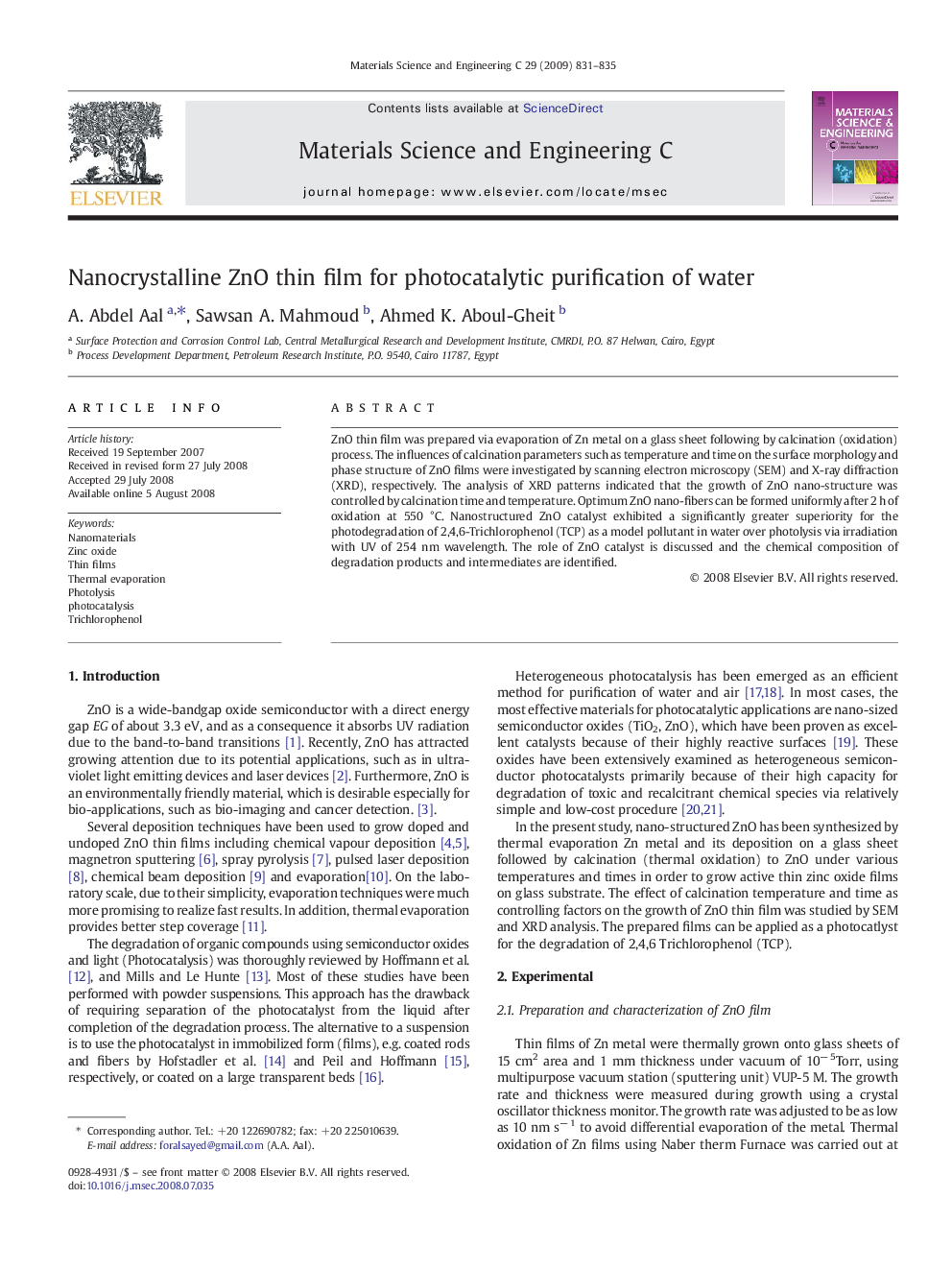| Article ID | Journal | Published Year | Pages | File Type |
|---|---|---|---|---|
| 1430154 | Materials Science and Engineering: C | 2009 | 5 Pages |
ZnO thin film was prepared via evaporation of Zn metal on a glass sheet following by calcination (oxidation) process. The influences of calcination parameters such as temperature and time on the surface morphology and phase structure of ZnO films were investigated by scanning electron microscopy (SEM) and X-ray diffraction (XRD), respectively. The analysis of XRD patterns indicated that the growth of ZnO nano-structure was controlled by calcination time and temperature. Optimum ZnO nano-fibers can be formed uniformly after 2 h of oxidation at 550 °C. Nanostructured ZnO catalyst exhibited a significantly greater superiority for the photodegradation of 2,4,6-Trichlorophenol (TCP) as a model pollutant in water over photolysis via irradiation with UV of 254 nm wavelength. The role of ZnO catalyst is discussed and the chemical composition of degradation products and intermediates are identified.
